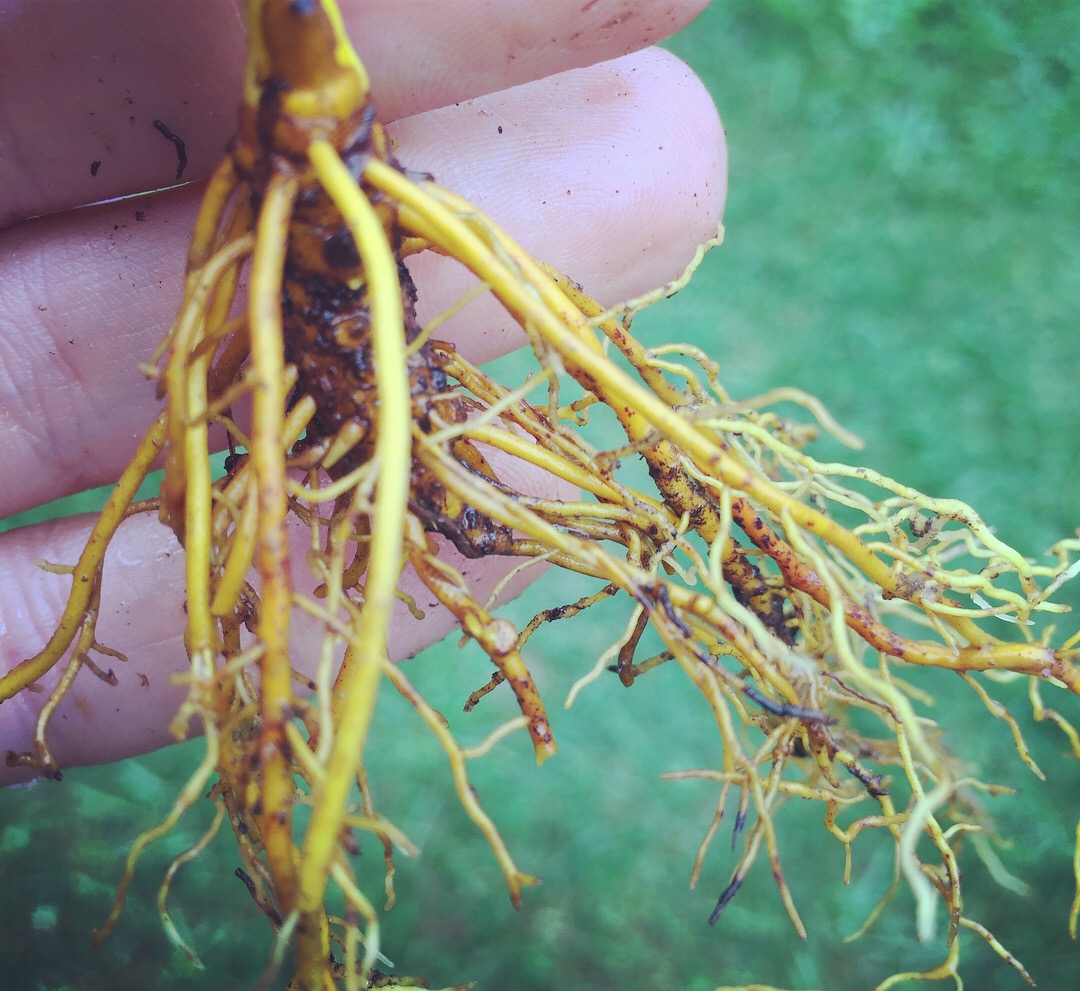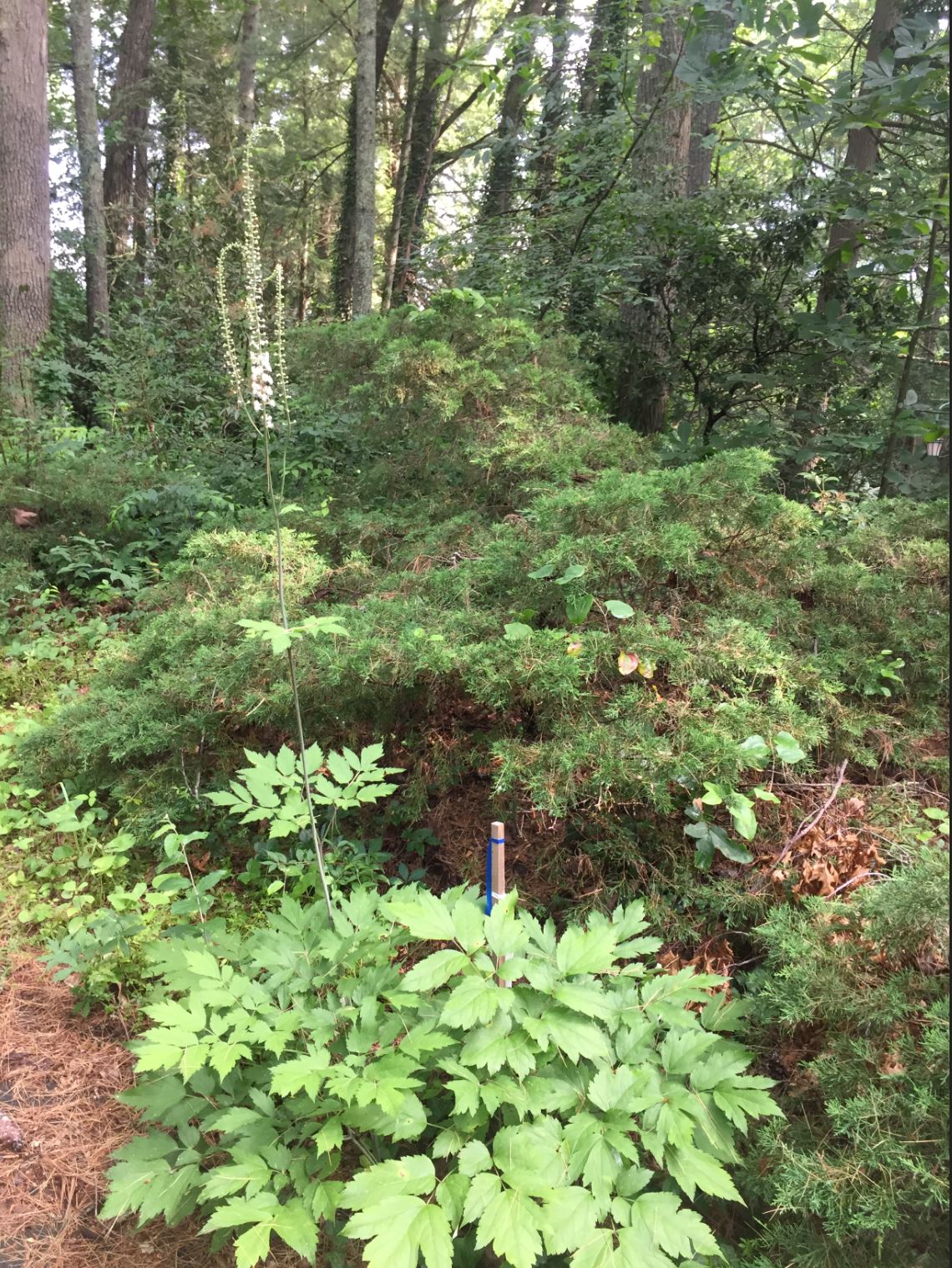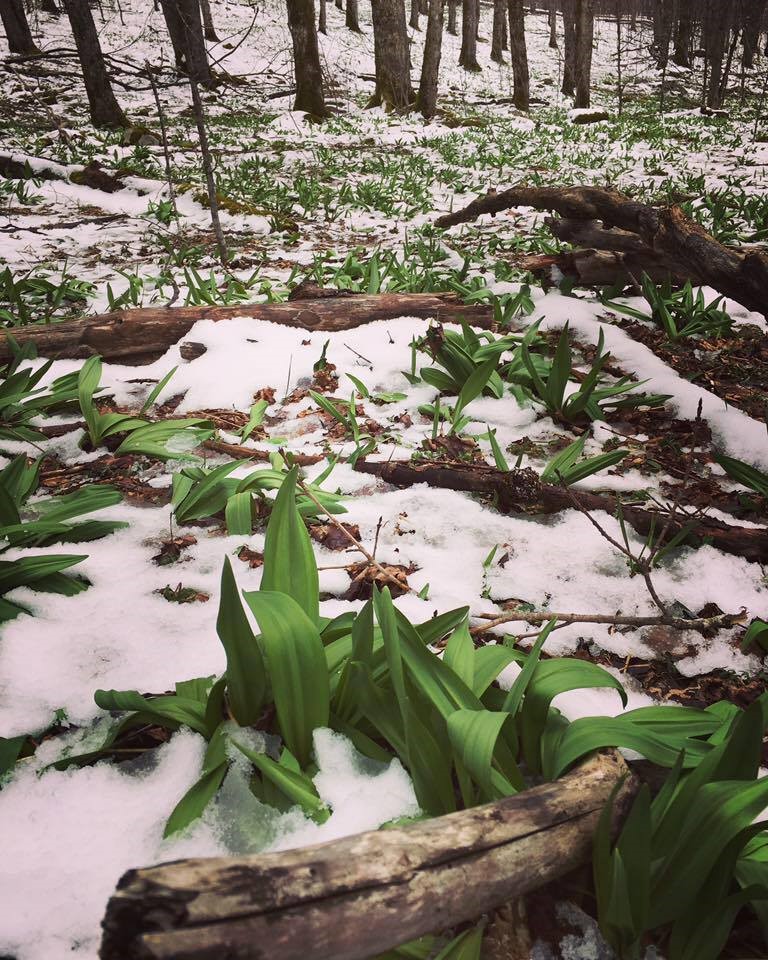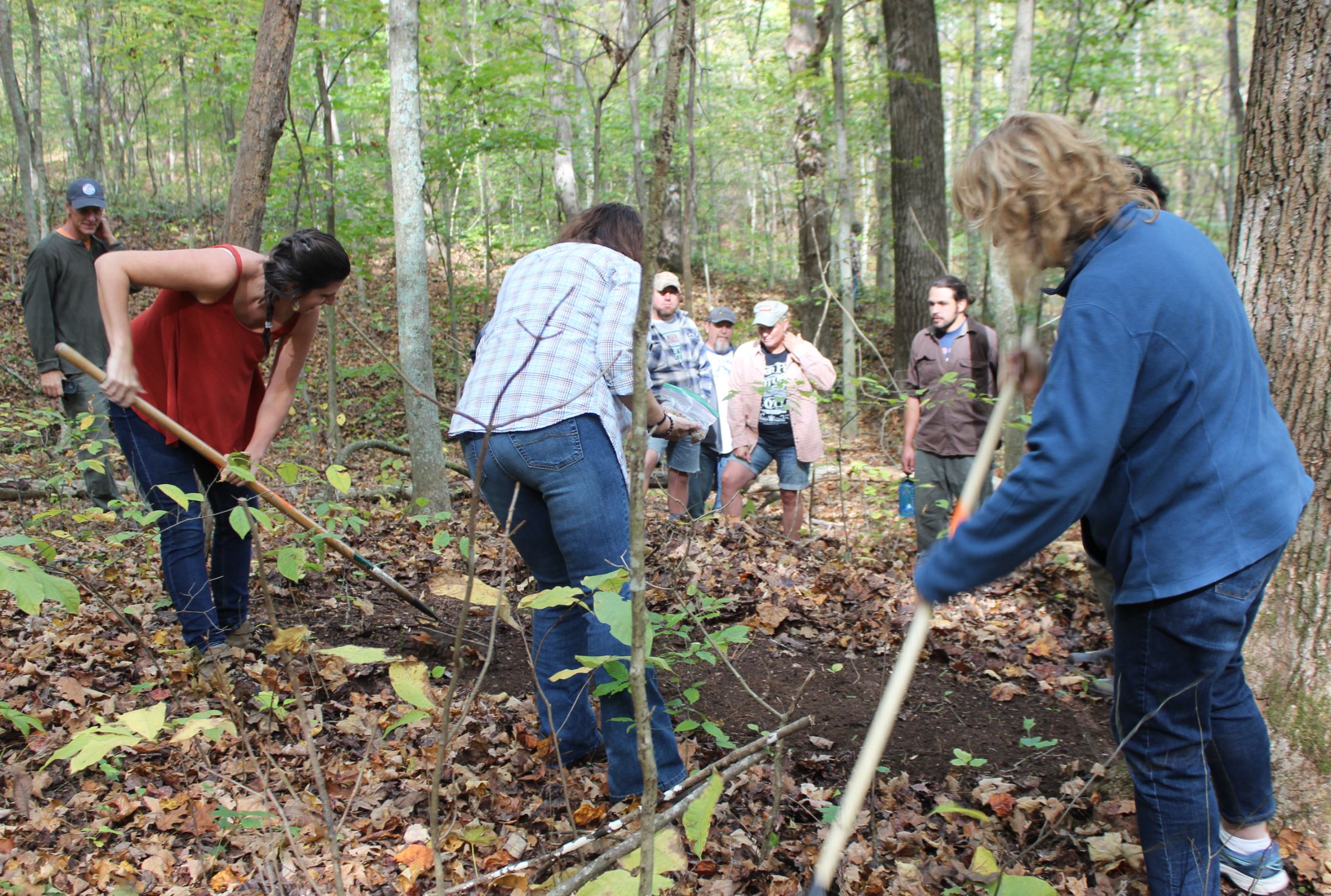The Appalachian Mountains are a global hotspot for biodiversity, including many plant species with a long history of medicinal, culinary, and decorative usage and economic value. Unfortunately, native wild populations of these plants are experiencing heavy overharvesting pressures and widespread habitat destruction, leading to serious declines. Recently, the International Union for Conservation of Nature listed Goldenseal (Hydrastis canadensis, Figure 1) as “Vulnerable to Extinction” due to unregulated wild-harvesting, and significant loss of forest habitat (IUCN 2017). The World Wildlife Fund reports that ~83% of the habitat in this ecoregion has been altered (Loucks et al. 2017). These pressures impact many Non-timber Forest Product (NTFP) species, and there is an urgent need to transition from the historically extractive, cash-economy model to a regenerative model.

A regenerative model increasingly sources plants from sustainable production rather than from the wild. A key method in this model is forest farming, “the intentional and sustainable cultivation of marketable …NTFPs… in woodlands with suitable shade and site conditions.” (Munsell et al. 2015). It is an alternative production approach “somewhere between wild grown stock and open field monocultures” (Teel and Buck 2002).
According to Shanley et al. (2016), 1.5 billion people use or trade NTFPs globally with the majority of that activity “occurring at local and regional scales.” While NTFP production is more prevalent in other countries, a variety of income benefits are available to small landowners in Appalachia. Viable markets include production of planting stock, raw or dried plant material for industry buyers, and the creation of value-added products. Forest farming strengthens rural community resilience through self-reliance. Equally significant, NTFP revenue streams can assist landowners in retaining forestland, maintain healthy ecological services (e.g. water quality), foster carbon sequestration, and protect biodiversity.
Appalachia Forest Farming (AFF) is a regional initiative promoting grassroots efforts to implement this concept of “Conservation through Cultivation” in economically distressed Appalachian communities and whose goals are: to conserve wild populations of NTFP species, especially “at-risk” (https://unitedplantsavers.org/species-at-risk-list/); help retain family forests; foster market access for growers; and launch grassroots pilot projects. Local AFF partners work with landowners and farmers with access to appropriate forests and an interest in cultivation of NTFPs, e.g. medicinals such as North American ginseng (Panax quinquefolium, Figure 2), blue cohosh (Caulophyllum thalictroides, Figure 3), and goldenseal (Hydrastis canadensis); and culinary species including ramps (Allium tricoccum, Figure 4), paw paw (Asimina triloba) and several types of mushrooms and nuts; and decorative plants such as galax (Galax urceolata), many ferns, etc.
 Figure 2. North American Ginseng (Panax quinquefolia). Credit: Katie Commender, Appalachian Sustainable Development.
Figure 2. North American Ginseng (Panax quinquefolia). Credit: Katie Commender, Appalachian Sustainable Development.

 Figure 4. Ramps (Allium tricoccum). Credit: Katie Commender, Appalachian Sustainable Development.
Figure 4. Ramps (Allium tricoccum). Credit: Katie Commender, Appalachian Sustainable Development.
Through AFF, partners are catalyzing a new wave of forest farming and creating vibrant regional mechanisms including collaborative funding efforts. In 2017, United Plant Savers (partnering with the U.S. Fish and Wildlife Service) convened ~200 people for their “Ginseng and Forest Botanicals Symposium” at West Virginia University (https://unitedplantsavers.org/wp-content/uploads/2018/05/17-1681-Ginseng-Symposium-proceedings.pdf). Thanks to our partners at the Claude Worthington Benedum Foundation, Grow Appalachia is convening a series of roundtables (Figure 5) and launching growers groups in "economically distressed" counties in West Virginia, thereby expanding the AFF work they have undertaken in rural Kentucky. Appalachian Sustainable Development addresses supply chain infrastructure to facilitate aggregation and processing sufficient quantities of quality plant material. Southern Appalachian Mountain Stewards and Coal River Mountain Watch host events celebrating cultural heritage including “sovereign remedies” and traditional music. The Highlander Center is focusing on complex issues of land access, social justice and ownership patterns through their Appalachian Transition Fellows program.

Related projects in the wider forest farming community of practitioners include the Appalachian Beginning Forest Farmer’s Coalition, a platform for education, training and networking, Yew Mountain Center which conducts demonstration models and education programs, and Rural Action’s sustainable forestry/NTFP training programs (Figure 6). Rural Action also leads a forest-grown verification initiative with United Plant Savers.
 Figure 6. Forest Farming Workshop. Source: Rural Action.
Figure 6. Forest Farming Workshop. Source: Rural Action.
Other significant efforts in this work include Conservation Fund’s Resilient Communities program, which promotes Community Forestry NTFP models throughout the Southeast. Finally, Warren Wilson College’s Ecological Forestry program engages students in NTFP propagation research, stock production, field tests and local outreach services, utilizing their 600-acre forest.
Forest Farming is a valuable approach for balancing the conservation of NTFP species while offering sustainable income generation in Appalachia. If you are interested please contact any of the partners or C. Laporte.
References:
IUCN, International Union for the Conservation of Nature (2017) Unregulated wild collection and habitat loss lead to vulnerable status for medicinal Goldenseal. https://www.iucn.org/news/species/201711/unregulated-wild-collection-and-habitat-loss-lead-vulnerable-status-medicinal-goldenseal . Accessed 22 July 2018
Loucks C, Olson D, Dinerstein E, Weakley A, Noss R, Stritholt J, Wolfe K (2017)
Temperate broadleaf and mixed forests, Appalachian Blue-Ridge forests. https://www.worldwildlife.org/ecoregions/na0403 . Accessed 22 July 2018.
Munsell J, Davis J, Chamberlain J (2015) Forest farming. In: Training Manual for Applied Agroforestry Practices. University of Missouri Center for Agroforestry, Columbia, pp 115-126
Shanley P, Pierce A, Laird S, Lopez C, Guariguata M (2016) From lifelines to livelihoods: non-timber forest products into the 21st century. In: Pancel L, Kohl M (eds) Tropical Forestry Handbook. Springer, Berlin, pp 2713-2760
Teel WS, Buck LE (2002) Between wildcrafting and monocultures: agroforestry options. In: Jones ET, McLain RJ, Weigand J (eds) Nontimber Forest Products of the United States. University Press of Kansas, Wichita, pp 199-222

